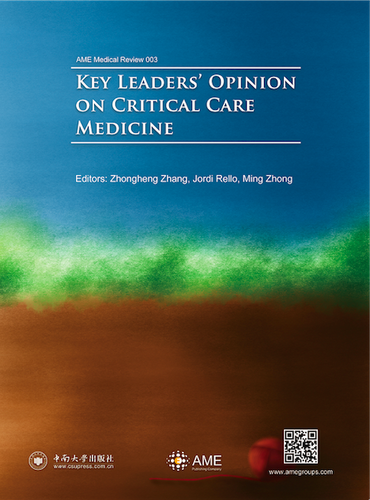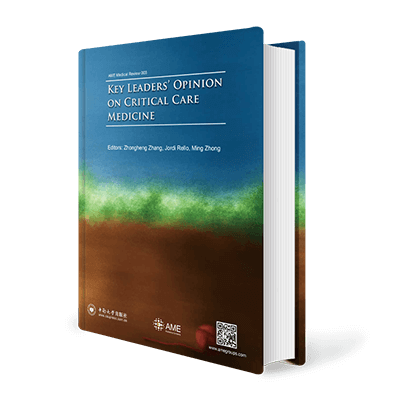Sepsis and Infection
53 Fever: suppress or let it ride?
Juliet J. Ray, Carl I. Schulman
57 Acetaminophen in critically ill patients, a therapy in search for big data analytics
Sven Van Poucke, Willem Boer
59 Acetaminophen for febrile patients with suspected infection: potential bene t and further directions
Shohei Makino, Moritoki Egi
63 Is there a role for continuous infusion of β-lactam antibiotics in severe sepsis?
Angela Bates, Ari R. Joffe
66 Balanced control of both hyper and hypo-in ammatory phases as a new treatment paradigm in sepsis
Panagiotis Tsirigotis, Spiros Chondropoulos, Konstantinos Gkirkas, Josef Meletiadis, Ioanna Dimopoulou
71 Septic shock in the era of precision medicine
Jordi Rello, Francisco Valenzuela-Sánchez
73 Sepsis without SIRS is still sepsis
Bryan G. Yipp, Brent W. Winston
75 Why we need a new de nition of sepsis
Sarah J. Beesley, Michael J. Lanspa
79 Forget skin scrubbing and other antiseptics: prevent catheter related infections using chlorhexidine plus alcohol
Adrián Camacho-Ortiz, Alma Lucía Román-Mancha
82 A multimodality approach to prevent catheter-related bloodstream infections: the role of chlorhexidine- alcohol as a skin antiseptic before intravascular catheter insertion
Kwok M. Ho
85 What is new for the prevention of catheter-related bloodstream infections?
Leonardo Lorente
90 Venous-to-arterial carbon dioxide differences and the microcirculation in sepsis
Mui Teng Chua, Win Sen Kuan
93 Venous-to-arterial CO2 differences and the quest for bedside point-of-care monitoring to assess the microcirculation during shock
David N. Naumann, Mark J. Midwinter, Sam Hutchings
97 Choice of crystalloids in sepsis: a conundrum waiting to be solved
Ying Wei Yau, Win Sen Kuan
101 Preventing the development of acute cor pulmonale in patients with acute respiratory distress syndrome: the rst step
Abhishek Biswas
106 Editorial on low-dose acetylsalicylic acid treatment and impact on short-term mortality in staphylococcus aureus bloodstream infection: a propensity score-matched cohort study
Christian Schoergenhofer, Michael Schwameis, Heimo Lagler, Bernd Jilma
Cardiac Arrest and CPR
109 Continuous or interrupted chest compressions for EMS-performed cardiopulmonary resuscitation
Hideo Inaba, Testuo Maeda
112 To interrupt, or not to interrupt chest compressions for ventilation: that is the question!
Elisabete Aramendi, Unai Irusta
115 What can a simple measure of heart rate during temperature management tell us on the physiology and prognosis of comatose cardiac arrest patients?
Jakob Hartvig Thomsen, Christian Hassager, Jesper Kjaergaard
Outcome for the Critically ill
119 A modi ed Sequential Organ Failure Assessment score using the Richmond Agitation-Sedation Scale in critically ill patients
Damien Viglino, Maxime Maignan, Guillaume Debaty
122 Serum creatinine level, a surrogate of muscle mass, predicts mortality in critically ill patients
Charat Thongprayoon, Wisit Cheungpasitporn, Kianoush Kashani
129 Utility of the Richmond Agitation-Sedation Scale in evaluation of acute neurologic dysfunction in the intensive care unit
Vrinda Trivedi, Vivek N. Iyer
132 Serum lactate level as a useful predictor of clinical outcome after surgery: an unful lled potential?
Lorenzo Cobianchi, Andrea Peloso, Claudia Filisetti, Francesco Mojoli, Fabio Sciutti
135 Lactate: the “Black Peter” in high-risk gastrointestinal surgery patients
Patrick M. Honore, Rita Jacobs, Inne Hendrickx, Elisabeth De Waele, Herbert D. Spapen
Delirium and Sedation
138 Can the critical-care pain observation tool (CPOT) be used to assess pain in delirious ICU patients?
Saskia Rijkenberg, Peter H. J. van der Voort
141 The impact of sedation protocols on outcomes in critical illness
Benjamin Scott, Tobias Eckle
144 The best sedation drug—a quest for the holy grail?
Cássia Righy, Rodrigo B. Sera m, Jorge I. Salluh
146 Sedative choice and ventilator-associated patient outcomes: don’t sleep on delirium
Sean S. Barnes, Sapna R. Kudchadkar
Extracorporeal Support
149 The delicate balance between pro-(risk of thrombosis) and anti-(risk of bleeding) coagulation during extracorporeal membrane oxygenation
Alessandro Protti, Camilla L’Acqua, Mauro Panigada
153 Hemostatic changes during extracorporeal membrane oxygenation: a commentary
Nicolò Patroniti, Vittorio Scaravilli
Methodology of Study Design
156 Challenging orthodoxy in critical care trial design: physiological responsiveness
Scott Aberegg




